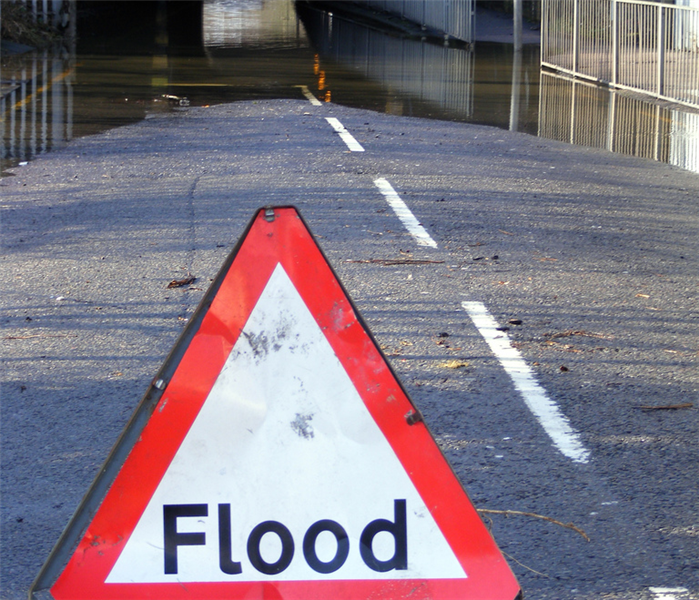Recent Storm Damage Posts
After the Storm: Assessing Health and Property Damage in Northern Lake County, IL
2/12/2023 (Permalink)
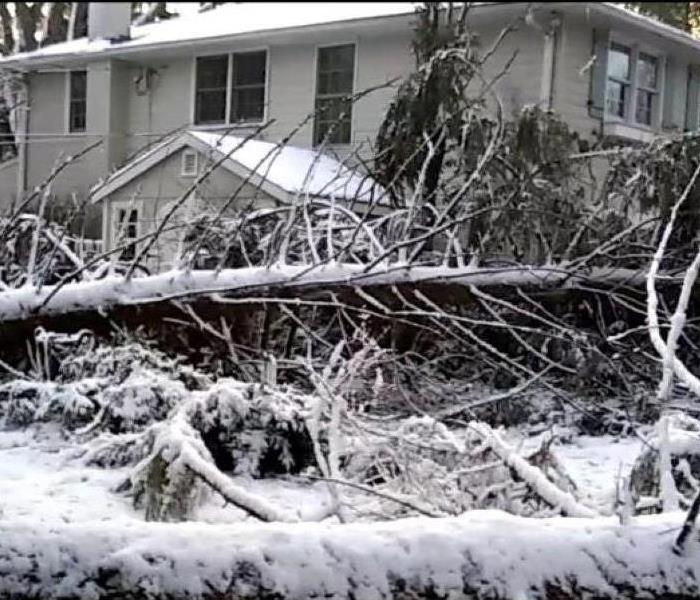 Winter storms can cause major damage to your home. Inspect the exterior and interior after a storm and call us if you need help!
Winter storms can cause major damage to your home. Inspect the exterior and interior after a storm and call us if you need help!
After a severe winter storm, there is much to assess. The number one concern is the physical well being of yourself and your family. Secondly, you’ll want to assess any damage to your property. Here are some tips for both from the American Red Cross and FEMA:
Check for Frostbite
Frostbite can cause loss of feeling and color around the face, fingers, and toes. Signs may include numbness, white or grayish-yellow skin, and firm or waxy skin. Actions to take include going to a warm room, soaking in warm water, and using body heat to warm. Do not massage or use a heating pad
Check for Hypothermia
Hypothermia is an unusually low body temperature. A temperature below 95 degrees is an emergency. Signs could include shivering, exhaustion, confusion, fumbling hands, memory loss, slurred speech, and drowsiness. Action to take include going to a warm room, warming the center of the body first—chest, neck, head, and groin. Keep dry and wrapped up in warm blankets, including the head and neck.
Make a careful and thorough inspection of your home’s structural elements
- Check the outside of your home before you enter
- Look for loose power lines, broken or damaged gas lines, foundation cracks, missing support beams or other damage. Damage on the outside can indicate a serious problem inside. Ask a building inspector or contractor to check the structure before you enter.
- Is your ceiling sagging? That means it got wet – which makes it heavy and dangerous. It will have to be replaced.
- If power is out, use a flashlight. Do not use any open flame, including candles, to inspect for damage or serve as alternate lighting.
- Take photographs of the damage. You may need these to substantiate insurance claims later.
If you do find damage, call SERVPRO of Gurnee for help. We are experienced in these situations, and we know what to do next. We are a preferred vendor for most insurance companies, and we can help with your claim if you choose to file one. We are here to help 24/7/365.
During the Storm: Winter Storm Safety in Northern Lake County, IL
12/12/2022 (Permalink)
 Winter storms can be deadly. Staying safe is the #1 concern!
Winter storms can be deadly. Staying safe is the #1 concern!
Lake County, IL winters can be brutal, with severe storms causing widespread damage and injuries. Winter storms create a higher risk of car accidents, hypothermia, frostbite, carbon monoxide poisoning, and heart attacks from overexertion. Here are a few tips from FEMA on how to be smart and stay safe during a winter storm:
Stay off roads if at all possible. If trapped in your car, stay inside.
Limit your time outside.
If you need to go outside, wear layers of warm clothing. Watch for signs of frostbite and hypothermia.
Avoid carbon monoxide poisoning.
Only use generators and grills outdoors and away from windows. Never heat your home with a gas stovetop or oven.
Reduce the risk of a heart attack. Avoid overexertion when shoveling snow.
Watch for signs of frostbite and hypothermia and begin treatment right away.
Check on neighbors. Older adults and young children are more at risk in extreme cold.
Keeping yourself and loved ones safe during these storm events is always the number one concern. After the storm, if you need assistance with property damage or water intrusion, please call SERVPRO of Gurnee for assistance. We are always here to help 24/7/365.
Pre-Storm Winter Storm Preparedness in Northern Lake County, IL
10/12/2022 (Permalink)
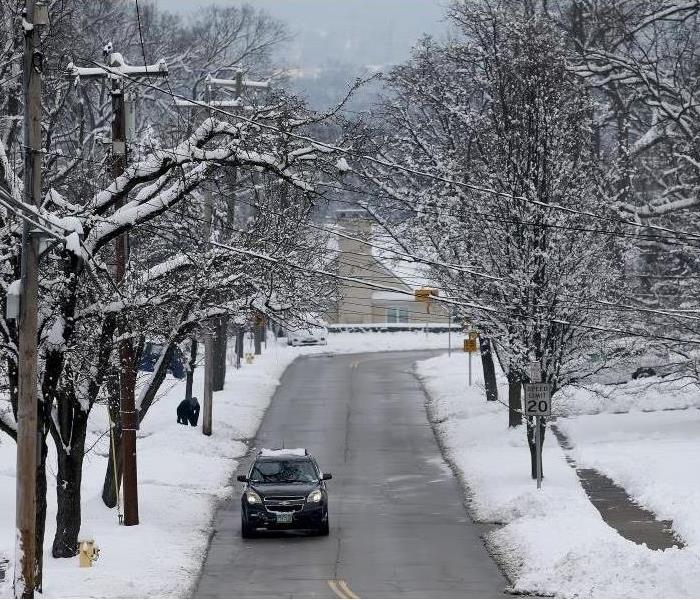 Winter storms can cause damage and injury. It is important to be educated and prepared.
Winter storms can cause damage and injury. It is important to be educated and prepared.
Winter storms and blizzards in Lake County can bring extreme cold, freezing rain, snow, ice, and high winds. It is important to be prepared to protect yourself and your property from these winter storm events. Winter storms create a higher risk of car accidents, hypothermia, frostbite, carbon monoxide poisoning, and heart attacks from overexertion. Here are a few tips from FEMA that can help:
Know your area’s risk
Extreme winter weather can leave communities without utilities or other services for long periods of time.
Prepare your home to keep out the cold
Check insulation, caulking, and weather stripping. Learn how to keep pipes from freezing. Install and test smoke alarms and carbon monoxide detectors with battery backups
Pay attention to weather reports and warnings of freezing weather and winter storms.
Sign up for your community’s warning system. The Emergency Alert System (EAS) and National Oceanic and Atmospheric Administration (NOAA) Weather Radio also provide emergency alerts.
Gather supplies in case you need to stay home for several days without power.
Keep in mind each person’s specific needs, including medication. Don’t forget the needs of pets. Have extra batteries for radios and flashlights.
Include jumper cables, sand, a flashlight, warm clothes, blankets, bottled water, and non-perishable snacks. Keep the gas tank full.
In the event that your home sustains damage from a winter storm, please do not hesitate to call SERVPRO of Gurnee at 847-838-2954. Our trained professionals are standing by 24/7/365 to assist with your emergencies.
Insurance Coverage for Storm Damage
8/12/2022 (Permalink)
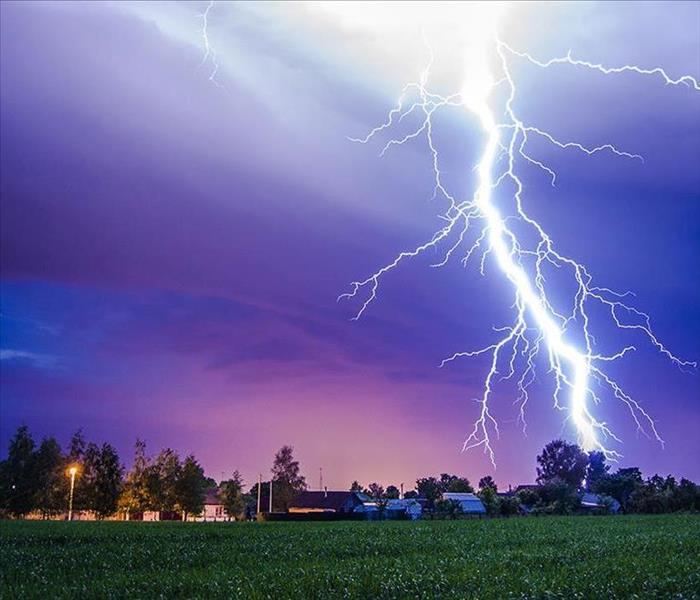 Understanding your property insurance can help protect you in the event your home sustains damage from a storm.
Understanding your property insurance can help protect you in the event your home sustains damage from a storm.
Spring and Summer weather in the Midwest is welcomed with open arms each year. It can, however, bring storms that could cause a wide variety of damage to your home. Fortunately, much of this damage is covered by your homeowner’s insurance. This insurance protection depends on what type of damage was caused and what caused it.
Here are a few common events that are often covered on a standard home policy:
Wind Damage
Wind almost always damages the weakest areas of a home. After a storm, indications of damage would include:
- Shingles in the yard
- Creased or broken shingles from wind
- Loose or missing siding and trim on your home
- Loose or broken downspouts and gutters
Hail Damage
If hail causes damage to the exterior of your home, your dwelling coverage helps cover the cost to repair or replace the damage.
However, your home’s detached structures, such as a fence, garage, gazebo or swimming pool, may only have limited coverage from your base policy. In order to properly protect them from hail damage, you may want to consider adding coverage for your detached structures.
Lightning Damage
Lightning can cause serious damage to your home, including fire and damage to your electronic devices. Fortunately, your home insurance covers lightning-damaged electronics and other personal property, and your dwelling coverage protects the structure of your home if lightning causes a fire.
Here are a few coverages that can be added for extra protection:
Flood Insurance
Floods are a natural disaster that aren’t covered by your homeowners policy, but many companies offer flood insurance from the National Flood Insurance Program. If you live in a flood-prone area or just want peace of mind, consider purchasing flood insurance to protect your home and personal property.
Roof Replacement Cost Coverage
Your home insurance is designed to help cover the replacement of your roof if it’s damaged by a covered loss. But the amount you’ll receive for your damaged roof depends on if you have actual cash value (ACV) or replacement cost value (RCV). Having roof replacement cost value coverage means you’re covered for what it’d cost to replace your roof today without worrying about depreciation.
Matching Siding Coverage
Homeowner’s insurance replaces siding damage from specific types of losses, like damage from wind. However, it only covers the parts of your home that are damaged. By adding matching siding coverage, you’ll be covered for a higher amount to compensate for replacing additional siding to match.
Sump Pump Coverage
Your sump pump is designed to remove excess water that accumulates around your home’s foundation. If the system ever fails or the power goes out, water overflow may occur. And you're typically not covered for this type of damage with your homeowners insurance. Having water backup and sump pump overflow coverage gives you that important layer of protection that is so important during these Lake County spring and summer rains.
In the event you do suffer damage from a storm, please do not hesitate to call SERVPRO of Gurnee at 847-838-2954 for your restoration or repair concerns. We are here to help 24/7/365.
Lake County Tornado Season is Here: Be Prepared and Safe
6/12/2022 (Permalink)
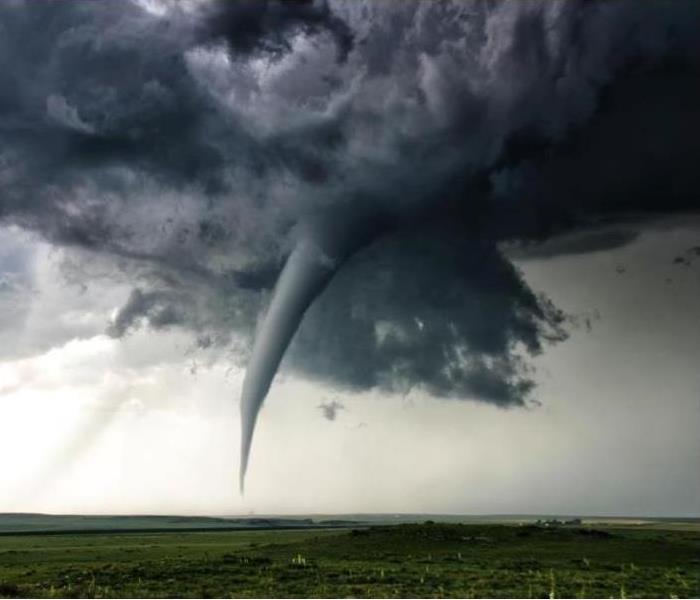 The US averages over 1,200 tornadoes per year. This exceeds the number of tornadoes in any other country, according to the NOAA.
The US averages over 1,200 tornadoes per year. This exceeds the number of tornadoes in any other country, according to the NOAA.
Prepare:
- Know the signs of a tornado, including a rotating funnel-shaped cloud, an approaching cloud of debris, or a loud roar similar to a freight train.
- Sign up for your community’s warning system. The Emergency Alert System (EAS) and National Oceanic and Atmospheric Administration (NOAA) Weather Radio also provide emergency alerts. Become familiar with your community's sirens.
- Pay attention to weather reports. Meteorologists can predict when conditions might be right for a tornado.
- Identify and practice going to a safe shelter for high winds, such as a safe room built using FEMA criteria or a storm shelter built to ICC 500 standards. The next best protection is a small, interior, windowless room in a sturdy building on the lowest level.
Survive:
- Immediately go to a safe location that you identified.
- Take additional cover by shielding your head and neck with your arms and putting materials such as furniture and blankets around you.
- Do not try to outrun a tornado in a vehicle.
- If you are in a car or outdoors and cannot get to a building, cover your head and neck with your arms and cover your body with a coat or blanket, if possible.
Recover:
- If you are trapped, cover your mouth with a cloth or mask to avoid breathing dust. Try to send a text, bang on a pipe or wall, or use a whistle instead of shouting.
- Stay clear of fallen power lines or broken utility lines.
- Do not enter damaged buildings until you are told that they are safe.
- Save your phone calls for emergencies. Phone systems are often down or busy after a disaster. Use text messaging or social media to communicate with family and friends.
- Be careful during clean-up. Wear thick-soled shoes, long pants, and work gloves.
In the event your home or business is damaged by a tornado or high winds, SERVPRO of Libertyville/North Chicago City/Lake Bluff is available 24/7/365 to assist in securing your property. Our reconstruction team is experienced in restoring properties from this type of damage, working in conjunction with your insurance company to bring your home or business back to life. Call us today at 847-557-1080.
Preparing your Home for Spring Storm Season in Northern Lake County
4/12/2022 (Permalink)
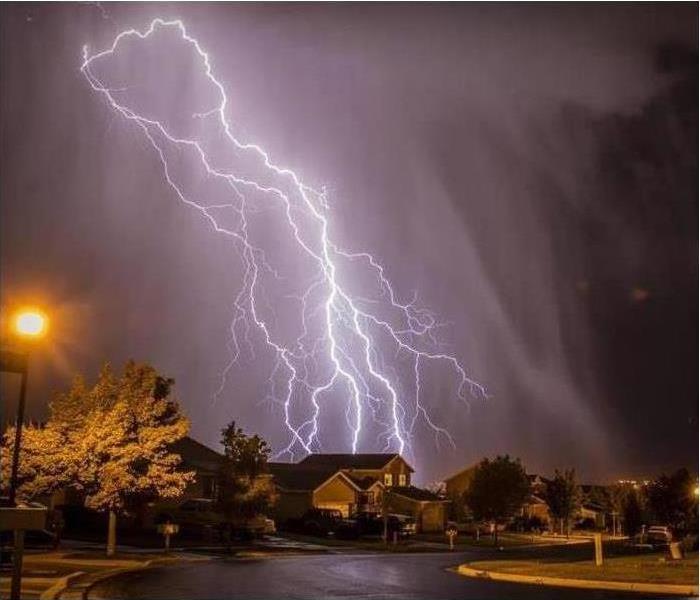 Spring weather can be unpredictable. It is important to prepare in advance for the ever changing Midwest weather.
Spring weather can be unpredictable. It is important to prepare in advance for the ever changing Midwest weather.
Spring has officially arrived. Warmer days have begun, and spring foliage is popping up all around us. The beauty of spring brings along with it the probability of strong storms. With a little forward thinking, you’ll be prepared to protect your home. Check out these tips for some ideas to be ready for whatever happens.
Sign up for weather text alerts
The Federal Emergency Management Agency (FEMA) sends text messages to keep you updated on emergency situations. However, long before anything gets that severe, your local government, weather channel, radio stations and power companies have similar services that let you know what’s happening in your region. The more information you get, the easier it is to plan and prepare.
You can also download the FEMA app to your smartphone, which gets you real-time National Weather Service alerts. You’ll also have access to important emergency safety tips for over 20 types of disasters.
Evaluate your home’s exterior
Your home is designed to shelter you from the weather. To keep it in tip-top condition, do regular walk-arounds and inspect for issues. Keep an eye out for the following things:
- Loose shingles
- Loose siding
- Tree branches extending over your house or driveway
- All unattached structures like sheds or gazebos should be bolted securely to their foundation
- Loose patio furniture that should be secured
- Loose gutters and missing/detached downspouts
- If you have shutters, make sure they’re secure and clear of debris
- Check to see if your fence needs repair
Check your sump pump
As the saying goes, “April showers bring May flowers.” And with all that rain, your risk of flooding increases. If you have a sump pump, it’s a great idea to run through an annual sump pump maintenance list.
You’ll want to clear all debris so it doesn’t impede function and ensure your back-up is in working order. With added sump pump failure and water backup coverage on your homeowner’s insurance policy, you’ll have better protection that can bring real peace of mind when the rain starts to fall.
Weather can be unpredictable, but you can still prepare for the unexpected. Talk with your local insurance agent to review your homeowner’s coverage, and call SERVPRO of Gurnee in the event your home sustains damage. We are available to take your call 24/7/365 at 847-838-2954.
Sump Pump Maintenance Saves Northern Lake County Homeowners Thousands in Water Damage
3/25/2022 (Permalink)
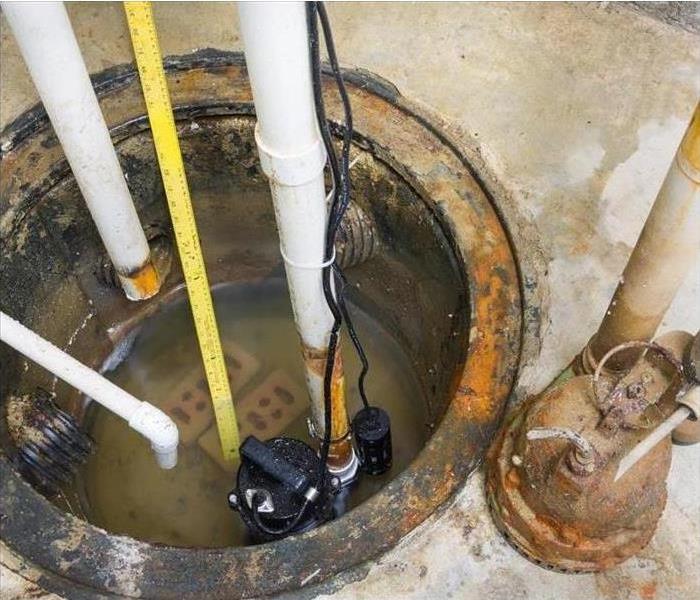 Proper sump pump maintenance mitigates your risk of water damage, potentially saving tens of thousands of dollars.
Proper sump pump maintenance mitigates your risk of water damage, potentially saving tens of thousands of dollars.
A number of homes that SERVPRO of Gurnee personnel have recently inspected had flooded basements or other living areas. During the initial inspection process, it was often discovered that a sump pump failure was the culprit of the damage.
Here are some steps that homeowners and business owners can take to ensure their sump pump are operating properly and mitigating their risk of property damage:
Every 3-4 months
- Clean pump inlet screen
- Check power cord / make sure the cord is plugged in
- Make sure the pump turns on by dumping a bucket or two of water into the sump, this will also help to determine if the float is operating correctly up and down.
Annually
- Take the pump out of the sump to clean and inspect it for any obvious defects
- Clean out the sump
- Grease/lubricate any necessary bearings on the pump. Check the owners manual for maintenance instructions.
- Lower the pump back into its correct position in the sump
- Test the pump and float by dumping a bucket or two of water into the sump.
Most importantly, if you do not feel comfortable taking care of the maintenance or are not mechanically inclined, ask the company that installed it to do the maintenance or for a referral for a company that can. Regular maintenance of your sump pump will help keep your water prone areas safe from flooding and keep your home environment a safe livable space for years to come. A little maintenance will go a long way.
In the event you do suffer a property loss due to water damage, please do not hesitate to call SERVPRO of Gurnee at 847-838-2954. We are here to help with your emergencies 24/7/365.
Storm Preparedness in Northern Lake County, IL: Protecting Your Property
2/18/2022 (Permalink)
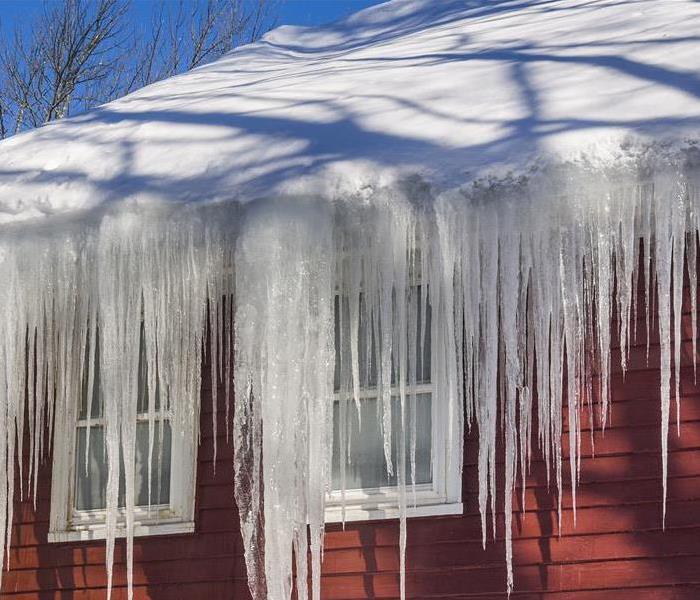 Icicles formed on your gutters could cause structural damage to your home. This is due to ice melting and refreezing.
Icicles formed on your gutters could cause structural damage to your home. This is due to ice melting and refreezing.
During the winter months, your property could be at risk of sustaining damage from a storm. Here are some tips to prevent property damage in the winter months.
Winterize Your Home
by insulating walls and attics, caulking and weather-stripping doors and windows, and installing storm windows or covering windows with plastic.
Insulate Water Pipes
Also, allow faucets to drip or trickle during unusually cold weather or if the power and heat are out to avoid freezing. When water freezes, it expands, and this can cause water pipes to burst. Know how to shut off water valves if a pipe bursts.
Clear Rain Gutters
repair roof leaks, check your roof to make sure it can handle the extra weight of the snow and ice, and cut away tree branches that could fall on a house or neighboring structure. Keep pathways and driveways clear between storms to avoid buildup of snow piles and icing.
Install Battery-Operated Carbon Monoxide Detectors
or electric detectors with battery backups in central locations on every level of your home. This will provide an early warning of accumulating carbon monoxide, which is a colorless, odorless, tasteless, and potentially deadly gas.
Hire a Contractor
to check the structural ability of your roof to sustain unusually heavy weight from the accumulation of snow and/or ice
Keep Fire Extinguishers on Hand
and make sure everyone in your home knows how to use them. If your smoke alarms get power from your home’s electrical system (hardwired), make sure the backup battery is replaced at least once a year, so your alarms will work during a power outage.
Maintain Heating Equipment
and chimneys by having them cleaned and inspected every year by a qualified professional.
In the event your property does become damaged despite your best efforts, SERVPRO of Gurnee is here to help. Call today for a free estimate. We are available at 847-838-2954, 24/7/365.
Storm Preparedness in Northern Lake County, IL: Emergency Supplies
2/11/2022 (Permalink)
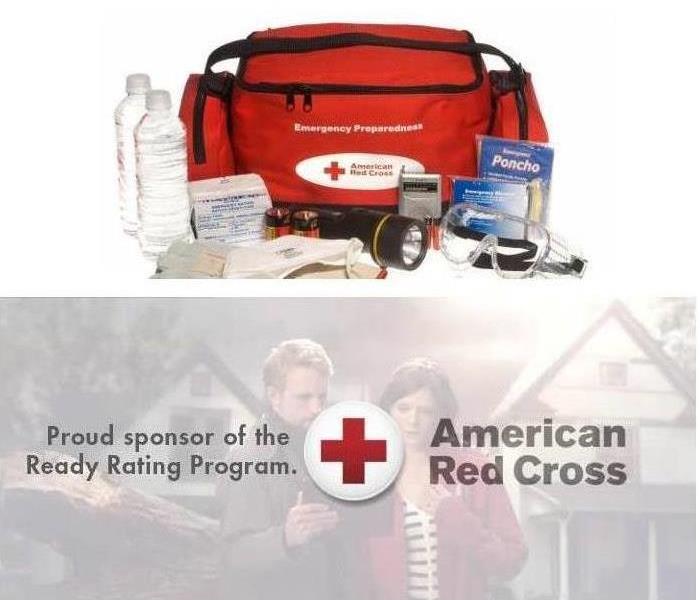 SERVPRO is proud to be a partner of the American Red Cross both corporately and locally since 2013.
SERVPRO is proud to be a partner of the American Red Cross both corporately and locally since 2013.
You may not be at home when a storm starts, so it is important to have basic supplies of food and water as well as a way to stay warm without power in several locations such as your workplace, vehicle, and/or school. You can build your supplies over time by adding a few items each week or month. For a complete list of emergency supplies, visit www.ready.gov/kit. Check these supplies off of your Winter Storm Preparedness Checklist once you add them to your emergency kit, which appears at the end of this document.
Emergency Communication
Make sure you have everything you will need to get in touch with your family either through cellular phones or email.
Medical Needs
Be equipped to tend to any current or unexpected medical conditions your family members may have. Ask your doctor about storing prescription meds such as at least a three days’ supply of heart and blood pressure medication, insulin for diabetics, and other prescription drugs such as inhalers for those with asthma. Include battery backup power for power-dependent mobility devices, oxygen, and other assistive technology needs.
Critical Documents
Place any important documents in a sealed, waterproof container to keep them dry and easily accessible.
Tools and Safety Items
Small items like matches, flashlights, a multi-tool, pocket knife, and a whistle (to signal for help) can make a huge difference for your family while weathering a storm.
Food/Supplies
Have at least a three-days’ supply of non-perishable food and water for your family. Remember to store anything specific to your family’s needs.
Warm Clothing and Blankets
Warm clothes and blankets can help prevent hypothermia. Do not forget warm, waterproof, and protective footwear as well as gloves.
In the event that your home or business is damaged by severe weather, please don’t hesitate to call SERVPRO of Gurnee at 847-838-2954 for assistance. Our team is available 24/7/365 for your water damage emergencies as well as a variety of other property repairs.
Storm Preparedness in Northern Lake County, IL: Stay Informed
2/4/2022 (Permalink)
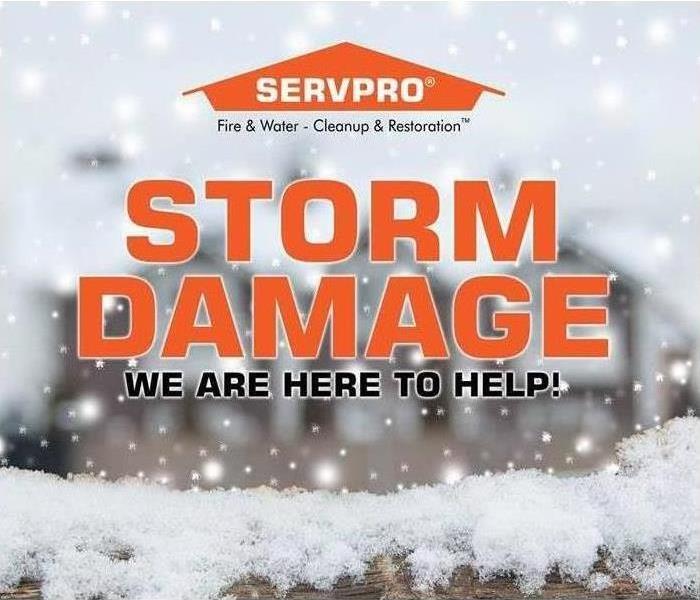 SERVPRO of Gurnee is here to help with any storm damage to your home or business.
SERVPRO of Gurnee is here to help with any storm damage to your home or business.
Emergency Notifications
- The National Weather Service (NWS) provides alerts and warnings for all hazards through a National Oceanic and Atmospheric Administration (NOAA) Weather Radio (NWR) receiver. For more information on NWR receivers, visit nws.noaa.gov/nwr/info/nwrrcvr.html.
- Sign up for emergency alerts and notifications that your community may offer. Download Be Smart. Know Your Alerts and Warnings for a summary of notifications at ready.gov/prepare.
- Download the FEMA and American Red Cross apps on iOS or Android at no cost. These apps may provide information about finding shelters, providing first aid, and seeking assistance for recovery.
Watches and Warnings
Learn the difference between Advisories, Watches, and Warnings, which describe changing winter weather conditions. Learning what these terms mean can help you understand how an approaching storm may impact you and what actions to take to stay safe. These alerts are issued by your local National Weather Service office and are based upon local criteria.
- Winter Weather Advisories are issued when snow, blowing snow, ice, sleet, or a combination of these wintry elements is expected but conditions should not be hazardous enough to meet Warning criteria. Be prepared for winter driving conditions and possible travel difficulties. Use caution when driving.
- Winter Storm Watches are issued when conditions are favorable for a significant winter storm event. Heavy sleet, heavy snow, ice storms, blowing snow, or a combination of these events are possible.
- Winter Storm Warnings are issued for a significant winter weather event including snow, ice, sleet, blowing snow, or a combination of these hazards. Travel will become difficult or impossible in some situations. Delay your travel plans until conditions improve.
In the event that your home or business is damaged by severe weather, don’t hesitate to call SERVPRO of Gurnee for assistance at 847-838-2954. Our team is available 24/7/365 for your water damage emergencies as well as a variety of other property repairs.
Tornado Warning vs. Tornado Watch in Northern Lake County, IL
6/30/2021 (Permalink)
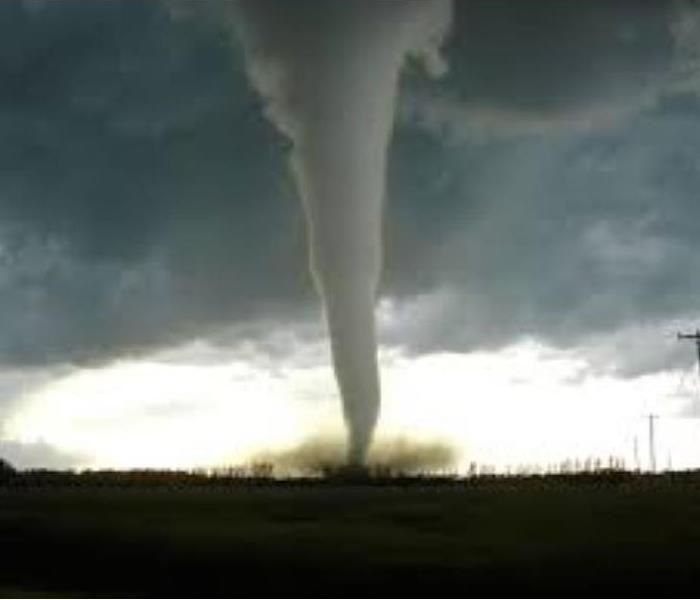 The United States experiences an average of 1,000 or more tornadoes every year.
The United States experiences an average of 1,000 or more tornadoes every year.
What’s the difference between a tornado warning and a tornado watch?
Both tornado watches and tornado warnings are issued by the National Oceanic and Atmospheric Administration (NOAA)/ National Weather Service. However, there are critical differences between the two alerts.
Tornado Watch
Conditions are favorable for tornadoes to develop. Be alert to changes in the weather, account for all family members, and listen to local radio and TV stations for updated storm information. Move cars inside and keep car and house keys with you. If time permits, move lawn furniture and equipment inside to minimize flying debris. If a tornado siren sounds, stay inside and take cover.
Tornado Warning
A tornado has actually been spotted or is indicated on weather radar in your area. This means danger is imminent and you may only have seconds to take cover.
In the event that your home or business sustains damage caused by the high winds of a tornado, SERVPRO of Gurnee can help! 24/7/365 emergency service is available for board up, tarp up, and water mitigation. Call us for help at 847-838-2954.
Being Prepared in Northern Lake County: Pack a Severe Weather Emergency Kit
6/30/2021 (Permalink)
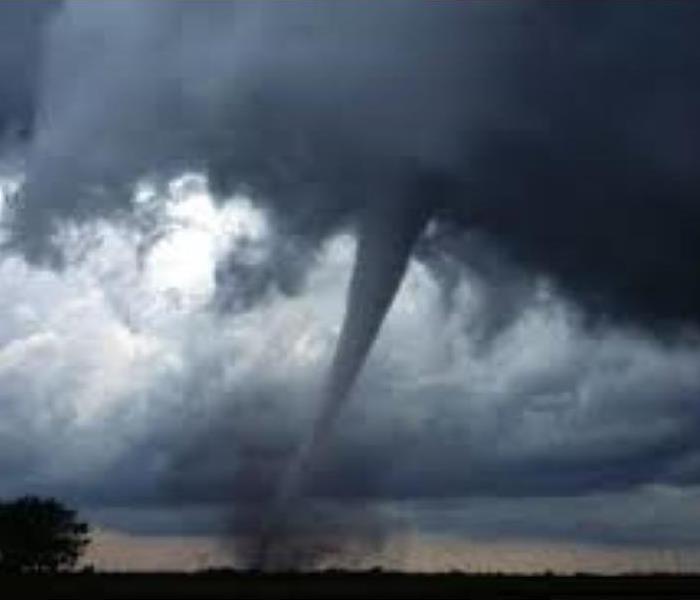 The United States ranks highest as the country with the most tornadoes. Canada places second.
The United States ranks highest as the country with the most tornadoes. Canada places second.
Despite the fact that meteorologists are now better able to predict them, tornadoes can strike with little warning. Therefore, it’s best to be prepared well before a tornado approaches. One way to be prepared is to compile an emergency kit. Here are some suggested items:
Water
Have a purification kit and enough water to last 72 hours
Food
Plan enough food to last 72 hours, plasticware, and some means of preparation
First Aid Kit
Include supplies to treat minor wounds and keep larger wounds under control
Medication
Pain relievers, anti-inflammatory medication, and prescriptions
Waterproof Clothing
Boots, jackets, pants, and warm clothing
Flashlight
Don’t forget the batteries!
Blankets and Pillows
Protect your head, neck, and body from falling debris with a heavy blanket and fluffy pillow
Toilet Kit
Sanitation and hygiene is extremely important! Include some wet wipes
Extra Supplies
Remember to pack any necessary supplies for your babies, kids, elderly parents, or pets, if applicable
NOAA Weather Radio
Stay updated with the current conditions. Download the app too!
Important Documents
Make sure to keep all of your important documents in a sealed waterproof container away from an area that can flood
Things to Do
Books, crosswords, games, and other items to keep yourself and loved ones occupied while waiting out the storm.
When the storm is over, if you find that you have property damage, call the professionals at SERVPRO of Gurnee right away for help. We have crews available 24/7 for tarp up and board up as well as water mitigation services.
Using IICRC Classifications To Assess Flood Damage
3/25/2021 (Permalink)
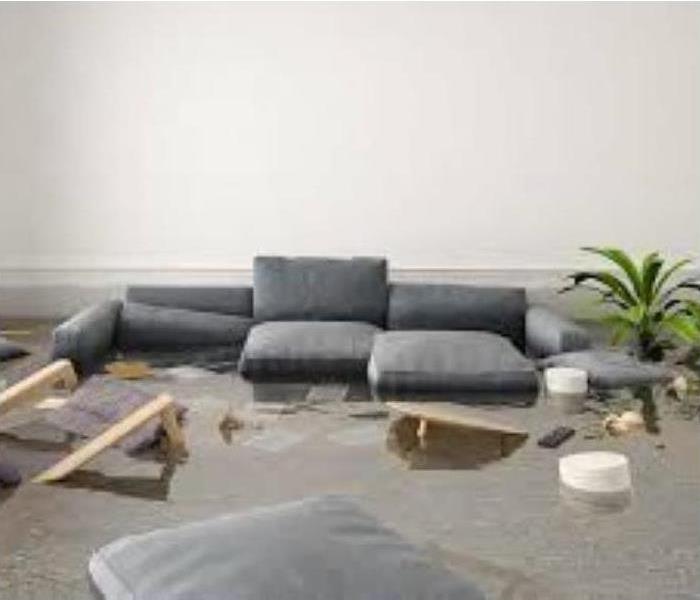 If you have sustained flood damage to your Lake County home – SERVPRO can help. We are an experienced flood damage restoration company.
If you have sustained flood damage to your Lake County home – SERVPRO can help. We are an experienced flood damage restoration company.
If you have sustained flood damage to your Lake County home or business – SERVPRO can help. We are an experienced flood damage restoration and repair team, with access to sophisticated tools and the finest equipment. If your property needs saving, we are the right choice. The first step we take once on site, is conducting a full inspection. This is designed to help us determine the extent and nature of the damage. The IICRC (Institute of Inspection Cleaning and Restoration Certification) categorizes flood damage using four key classifications. The SERVPRO technicians will use this guide to shape their plan of action and decide which repairs are required.
Here is some additional information on the IICRC classifications and what they might mean for your property.
Class One: Limited Intrusion
This is the least severe type of flood damage. A small amount of water has entered the home. There is minimal damage to walls and soft furnishings. Depending on the size, shape, and location of the affected space, large fans can likely be used to dry it out.
Class Two: Intrusion With Some Spread
Here, flood water has started to spread. If your house was impacted by a storm, the damage is almost going to have advanced beyond small pools of water. It may have risen into the walls and started to soak into timber, concrete, and insulation materials. The water has reached the subflooring beneath carpets. Industrial drying machines (and carpet lifters) will be brought in to absorb the excess moisture.
Class Three: Invasive Liquid
The walls, ceilings, soft furnishings, and floors are all damp and need to be dried quickly. Most are fully saturated with water. Water lines on the walls extend more than two feet above the floor. This tends to occur when ceilings leak (during heavy rainfall), and water seeps through the walls. Dehumidifiers and dryers can be used to restore the home, but some materials may be unsalvageable.
Class Four: Severe Invasion
In the most severe cases, objects not usually affected by flooding have been compromised. For instance, paintings high up on walls, attics (if the danger is from natural flooding), and crawl spaces. At SERVPRO, we’re committed to saving as many of your possessions as possible, but extensive damage can render some items irreparable. We will, however, inform you before disposing of any materials. Serious flood damage may require you to move out of the property while we secure its structural safety and install heavy duty drying machines.
If your home has been damaged by a storm or a burst pipe, assessing the damage is an important part of formulating a response. SERVPRO of Gurnee is a locally based service, which means that our response is always fast. Call us for help 24/7/365 at 847-838-2954.
Pre-Storm Winter Storm Preparedness in Northern Lake County, IL
2/26/2021 (Permalink)
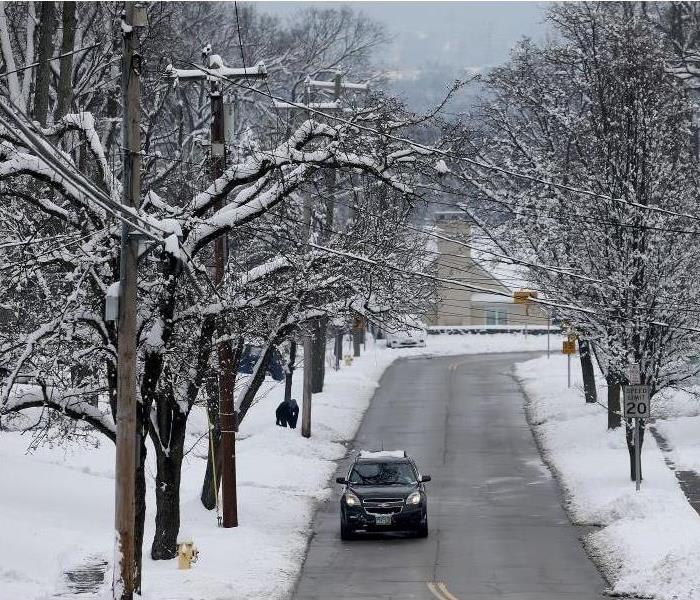 Winter storms can cause damage and injury. It is important to be as educated and prepared as possible.
Winter storms can cause damage and injury. It is important to be as educated and prepared as possible.
Winter storms and blizzards in Lake County can bring extreme cold, freezing rain, snow, ice, and high winds. It is important to be prepared to protect yourself and your property from these winter storm events. Winter storms create a higher risk of car accidents, hypothermia, frostbite, carbon monoxide poisoning, and heart attacks from overexertion. Here are a few tips from FEMA that can help:
Know your area’s risk
Extreme winter weather can leave communities without utilities or other services for long periods of time.
Prepare your home to keep out the cold
Check insulation, caulking, and weather stripping. Learn how to keep pipes from freezing. Install and test smoke alarms and carbon monoxide detectors with battery backups
Pay attention to weather reports and warnings of freezing weather and winter storms
Sign up for your community’s warning system. The Emergency Alert System (EAS) and National Oceanic and Atmospheric Administration (NOAA) Weather Radio also provide emergency alerts.
Gather supplies in case you need to stay home for several days without power
Keep in mind each person’s specific needs, including medication. Don’t forget the needs of pets. Have extra batteries for radios and flashlights.
Include jumper cables, sand, a flashlight, warm clothes, blankets, bottled water, and non-perishable snacks. Keep the gas tank full.
In the event that your home sustains damage from a winter storm, please do not hesitate to call SERVPRO of Gurnee at 847-838-2954. Our trained professionals are standing by 24/7/365 to assist with your emergencies.
During the Storm: Winter Storm Safety in Northern Lake County, IL
2/26/2021 (Permalink)
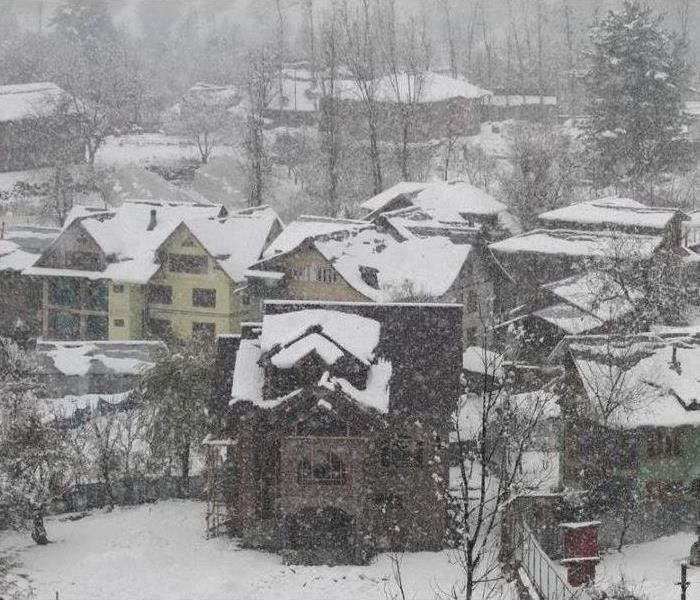 Winter storms can be deadly. Staying safe is the #1 concern!
Winter storms can be deadly. Staying safe is the #1 concern!
Lake County, IL winters can be brutal, with severe storms causing widespread damage and injuries. Winter storms create a higher risk of car accidents, hypothermia, frostbite, carbon monoxide poisoning, and heart attacks from overexertion. Here are a few tips from FEMA on how to be smart and stay safe during a winter storm:
Stay off roads if at all possible. If trapped in your car, stay inside.
Limit your time outside.
If you need to go outside, wear layers of warm clothing. Watch for signs of frostbite and hypothermia.
Avoid carbon monoxide poisoning.
Only use generators and grills outdoors and away from windows. Never heat your home with a gas stovetop or oven.
Reduce the risk of a heart attack. Avoid overexertion when shoveling snow.
Watch for signs of frostbite and hypothermia and begin treatment right away.
Check on neighbors. Older adults and young children are more at risk in extreme cold.
Keeping yourself and loved ones safe during these storm events is always the number one concern. After the storm, if you need assistance with property damage or water intrusion, please call SERVPRO of Gurnee for assistance. We are always here to help 24/7/365.
After the Storm: Assessing Health and Property Damage in Northern Lake County, IL
2/26/2021 (Permalink)
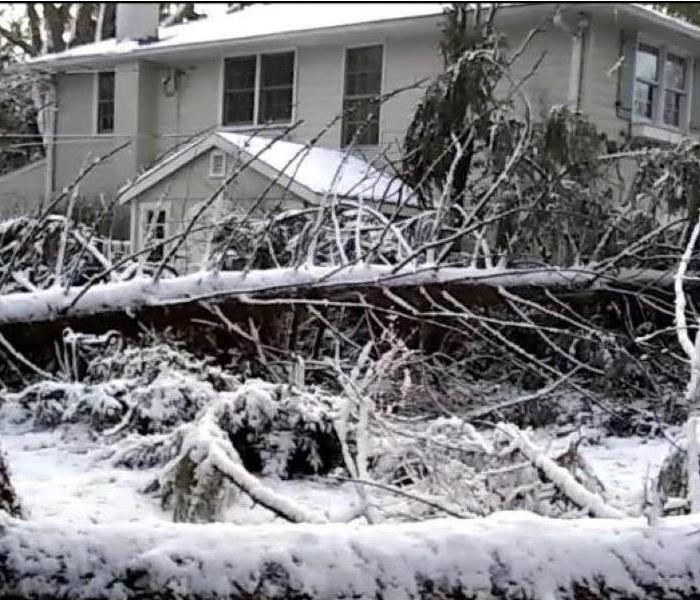 Winter storms can cause major damage to your home. Inspect the exterior and interior after a storm and call SERVPRO of Gurnee if you need help!
Winter storms can cause major damage to your home. Inspect the exterior and interior after a storm and call SERVPRO of Gurnee if you need help!
After a severe winter storm, there is much to assess. The number one concern is the physical well being of yourself and your family. Secondly, you’ll want to assess any damage to your property. Here are some tips for both from the American Red Cross and FEMA:
Check for Frostbite
Frostbite can cause loss of feeling and color around the face, fingers, and toes. Signs may include numbness, white or grayish-yellow skin, and firm or waxy skin. Actions to take include going to a warm room, soaking in warm water, and using body heat to warm. Do not massage or use a heating pad
Check for Hypothermia
Hypothermia is an unusually low body temperature. A temperature below 95 degrees is an emergency. Signs could include shivering, exhaustion, confusion, fumbling hands, memory loss, slurred speech, and drowsiness. Action to take include going to a warm room, warming the center of the body first—chest, neck, head, and groin. Keep dry and wrapped up in warm blankets, including the head and neck.
Make a careful and thorough inspection of your home’s structural elements
- Check the outside of your home before you enter
- Look for loose power lines, broken or damaged gas lines, foundation cracks, missing support beams or other damage. Damage on the outside can indicate a serious problem inside. Ask a building inspector or contractor to check the structure before you enter.
- Is your ceiling sagging? That means it got wet – which makes it heavy and dangerous. It will have to be replaced.
- If power is out, use a flashlight. Do not use any open flame, including candles, to inspect for damage or serve as alternate lighting.
- Take photographs of the damage. You may need these to substantiate insurance claims later.
If you do find damage, call SERVPRO of Gurnee for help. We are experienced in these situations, and we know what to do next. We are a preferred vendor for most insurance companies, and we can help with your claim if you choose to file one. We are here to help 24/7/365.
Northern Lake County Tornado Season: Be Prepared and Safe
6/16/2020 (Permalink)
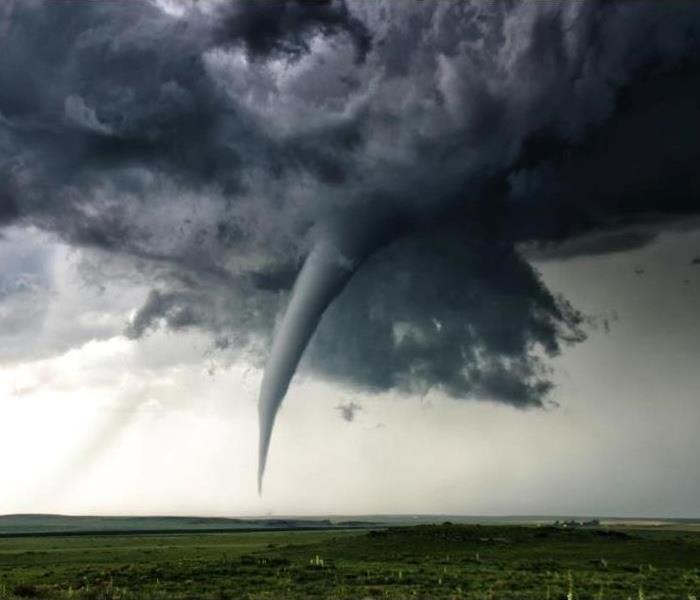 The US averages over 1,200 tornadoes per year. This exceeds the number of tornadoes in any other country, according to the NOAA.
The US averages over 1,200 tornadoes per year. This exceeds the number of tornadoes in any other country, according to the NOAA.
Prepare:
- Know the signs of a tornado, including a rotating funnel-shaped cloud, an approaching cloud of debris, or a loud roar similar to a freight train.
- Sign up for your community’s warning system. The Emergency Alert System (EAS) and National Oceanic and Atmospheric Administration (NOAA) Weather Radio also provide emergency alerts. Become familiar with your community's sirens.
- Pay attention to weather reports. Meteorologists can predict when conditions might be right for a tornado.
- Identify and practice going to a safe shelter for high winds, such as a safe room built using FEMA criteria or a storm shelter built to ICC 500 standards. The next best protection is a small, interior, windowless room in a sturdy building on the lowest level.
Survive:
- Immediately go to a safe location that you identified.
- Take additional cover by shielding your head and neck with your arms and putting materials such as furniture and blankets around you.
- Do not try to outrun a tornado in a vehicle.
- If you are in a car or outdoors and cannot get to a building, cover your head and neck with your arms and cover your body with a coat or blanket, if possible.
Recover:
- If you are trapped, cover your mouth with a cloth or mask to avoid breathing dust. Try to send a text, bang on a pipe or wall, or use a whistle instead of shouting.
- Stay clear of fallen power lines or broken utility lines.
- Do not enter damaged buildings until you are told that they are safe.
- Save your phone calls for emergencies. Phone systems are often down or busy after a disaster. Use text messaging or social media to communicate with family and friends.
- Be careful during clean-up. Wear thick-soled shoes, long pants, and work gloves.
In the event your home or business is damaged by a tornado or high winds, SERVPRO of Gurnee is available 24/7/365 to assist in securing your property. Our reconstruction team is experienced in restoring properties from this type of damage, working in conjunction with your insurance company to bring your home or business back to life. Call us at 847-838-2954.
Lake County Insurance Coverage for Spring and Summer Storm Damage
6/12/2020 (Permalink)
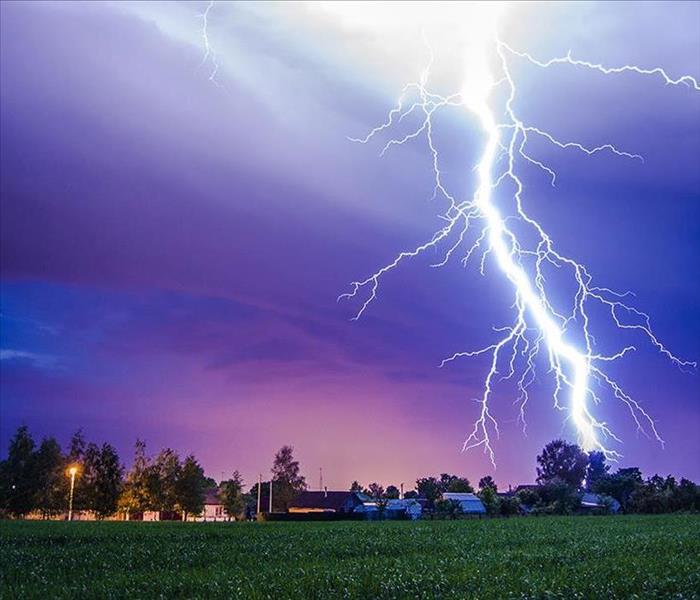 Understanding your property insurance can help protect you in the event your home sustains damage from a storm.
Understanding your property insurance can help protect you in the event your home sustains damage from a storm.
Spring and Summer weather in the Midwest is welcomed with open arms each year. It can, however, bring storms that could cause a wide variety of damage to your home. Fortunately, much of this damage is covered by your homeowner’s insurance. This insurance protection depends on what type of damage was caused and what caused it.
Here are a few common events that are often covered on a standard home policy:
Wind Damage
Wind almost always damages the weakest areas of a home. After a storm, indications of damage would include:
- Shingles in the yard
- Creased or broken shingles from wind
- Loose or missing siding and trim on your home
- Loose or broken downspouts and gutters
Hail Damage
If hail causes damage to the exterior of your home, your dwelling coverage helps cover the cost to repair or replace the damage.
However, your home’s detached structures, such as a fence, garage, gazebo or swimming pool, may only have limited coverage from your base policy. In order to properly protect them from hail damage, you may want to consider adding coverage for your detached structures.
Lightning Damage
Lightning can cause serious damage to your home, including fire and damage to your electronic devices. Fortunately, your home insurance covers lightning-damaged electronics and other personal property, and your dwelling coverage protects the structure of your home if lightning causes a fire.
Here are a few coverages that can be added for extra protection:
Flood Insurance
Floods are a natural disaster that aren’t covered by your homeowners policy, but many companies offer flood insurance from the National Flood Insurance Program. If you live in a flood-prone area or just want peace of mind, consider purchasing flood insurance to protect your home and personal property.
Roof Replacement Cost Coverage
Your home insurance is designed to help cover the replacement of your roof if it’s damaged by a covered loss. But the amount you’ll receive for your damaged roof depends on if you have actual cash value (ACV) or replacement cost value (RCV). Having roof replacement cost value coverage means you’re covered for what it’d cost to replace your roof today without worrying about depreciation.
Matching Siding Coverage
Homeowner’s insurance replaces siding damage from specific types of losses, like damage from wind. However, it only covers the parts of your home that are damaged. By adding matching siding coverage, you’ll be covered for a higher amount to compensate for replacing additional siding to match.
Sump Pump Coverage
Your sump pump is designed to remove excess water that accumulates around your home’s foundation. If the system ever fails or the power goes out, water overflow may occur. And you're typically not covered for this type of damage with your homeowners insurance. Having water backup and sump pump overflow coverage gives you that important layer of protection that is so important during these Lake County spring and summer rains.
In the event you do suffer damage from a storm, please do not hesitate to call SERVPRO of Gurnee at 847-838-2954 for your restoration or repair concerns. We are here to help 24/7/365.
Preparing Your Home for Spring Storms
3/26/2020 (Permalink)
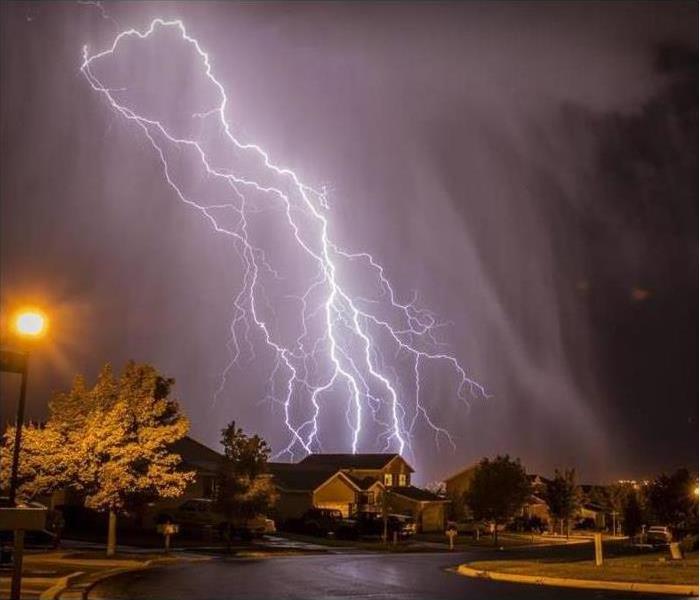 Spring weather in the Midwest can change quickly. Preparing in advance can mitigate damage to your home.
Spring weather in the Midwest can change quickly. Preparing in advance can mitigate damage to your home.
Spring has officially arrived! Warmer days have begun, and spring foliage is popping up all around us. The beauty of spring brings along with it the probability of strong storms. With a little forward thinking, you’ll be prepared to protect your home. Check out these tips for some ideas to be ready for whatever happens.
Sign up for weather text alerts
The Federal Emergency Management Agency (FEMA) sends text messages to keep you updated on emergency situations. However, long before anything gets that severe, your local government, weather channel, radio stations and power companies have similar services that let you know what’s happening in your region. The more information you get, the easier it is to plan and prepare.
You can also download the FEMA app to your smartphone, which gets you real-time National Weather Service alerts. You’ll also have access to important emergency safety tips for over 20 types of disasters.
Evaluate your home’s exterior
Your home is designed to shelter you from the weather. To keep it in tip-top condition, do regular walk-arounds and inspect for issues. Keep an eye out for the following things:
- Loose shingles
- Loose siding
- Tree branches extending over your house or driveway
- All unattached structures like sheds or gazebos should be bolted securely to their foundation
- Loose patio furniture that should be secured
- Loose gutters and missing/detached downspouts
- If you have shutters, make sure they’re secure and clear of debris
- Check to see if your fence needs repair
Check your sump pump
As the saying goes, “April showers bring May flowers.” And with all that rain, your risk of flooding increases. If you have a sump pump, it’s a great idea to run through an annual sump pump maintenance list.
You’ll want to clear all debris so it doesn’t impede function and ensure your back-up is in working order. With added sump pump failure and water backup coverage on your homeowner’s insurance policy, you’ll have better protection that can bring real peace of mind when the rain starts to fall.
Weather can be unpredictable, but you can still prepare for the unexpected. Talk with your local insurance agent to review your homeowner’s coverage, and call SERVPRO of Gurnee in the event your home sustains damage. We are available to take your call 24/7/365 at 847-838-2954.
Storm Preparedness in Lake Villa, IL: Protecting Your Property
2/28/2020 (Permalink)
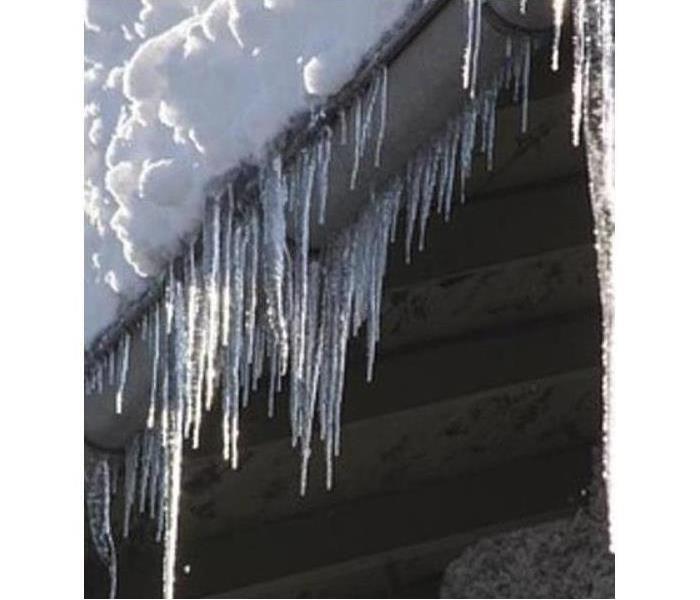 Icicles formed on your gutters could cause structural damage to your home. This is due to ice melting and refreezing.
Icicles formed on your gutters could cause structural damage to your home. This is due to ice melting and refreezing.
During the winter months, your property could be at risk of sustaining damage from a storm. Here are some tips to prevent property damage in the winter months.
Winterize Your Home
by insulating walls and attics, caulking and weather-stripping doors and windows, and installing storm windows or covering windows with plastic.
Insulate Water Pipes
Also, allow faucets to drip or trickle during unusually cold weather or if the power and heat are out to avoid freezing. When water freezes, it expands, and this can cause water pipes to burst. Know how to shut off water valves if a pipe bursts.
Clear Rain Gutters
repair roof leaks, check your roof to make sure it can handle the extra weight of the snow and ice, and cut away tree branches that could fall on a house or neighboring structure. Keep pathways and driveways clear between storms to avoid buildup of snow piles and icing.
Install Battery-Operated Carbon Monoxide Detectors
or electric detectors with battery backups in central locations on every level of your home. This will provide an early warning of accumulating carbon monoxide, which is a colorless, odorless, tasteless, and potentially deadly gas.
Hire a Contractor
to check the structural ability of your roof to sustain unusually heavy weight from the accumulation of snow and/or ice
Keep Fire Extinguishers on Hand
and make sure everyone in your home knows how to use them. If your smoke alarms get power from your home’s electrical system (hardwired), make sure the backup battery is replaced at least once a year, so your alarms will work during a power outage.
Maintain Heating Equipment
and chimneys by having them cleaned and inspected every year by a qualified professional.
In the event your property does become damaged despite your best efforts, SERVPRO of Gurnee is here to help. Call today for a free estimate. We are available at 847-838-2954 24/7/365.
Storm Preparedness in Antioch, IL: Stay Informed
2/26/2020 (Permalink)
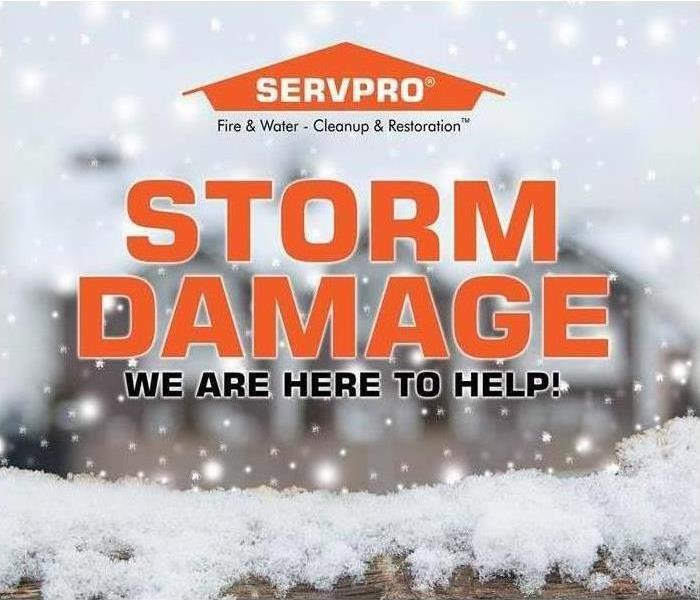 SERVPRO of Gurnee is here to help with any storm damage to your home or business.
SERVPRO of Gurnee is here to help with any storm damage to your home or business.
Emergency Notifications
- The National Weather Service (NWS) provides alerts and warnings for all hazards through a National Oceanic and Atmospheric Administration (NOAA) Weather Radio (NWR) receiver. For more information on NWR receivers, visit nws.noaa.gov/nwr/info/nwrrcvr.html.
- Sign up for emergency alerts and notifications that your community may offer. Download Be Smart. Know Your Alerts and Warnings for a summary of notifications at ready.gov/prepare.
- Download the FEMA and American Red Cross apps on iOS or Android at no cost. These apps may provide information about finding shelters, providing first aid, and seeking assistance for recovery.
Watches and Warnings
Learn the difference between Advisories, Watches, and Warnings, which describe changing winter weather conditions. Learning what these terms mean can help you understand how an approaching storm may impact you and what actions to take to stay safe. These alerts are issued by your local National Weather Service office and are based upon local criteria.
- Winter Weather Advisories are issued when snow, blowing snow, ice, sleet, or a combination of these wintry elements is expected but conditions should not be hazardous enough to meet Warning criteria. Be prepared for winter driving conditions and possible travel difficulties. Use caution when driving.
- Winter Storm Watches are issued when conditions are favorable for a significant winter storm event. Heavy sleet, heavy snow, ice storms, blowing snow, or a combination of these events are possible.
- Winter Storm Warnings are issued for a significant winter weather event including snow, ice, sleet, blowing snow, or a combination of these hazards. Travel will become difficult or impossible in some situations. Delay your travel plans until conditions improve.
In the event that your home or business is damaged by severe weather, don’t hesitate to call SERVPRO of Gurnee for assistance. Our team is available 24/7/365 for your water damage emergencies as well as a variety of other property repairs.
Storm Preparedness in Grayslake, IL: Emergency Supplies
2/26/2020 (Permalink)
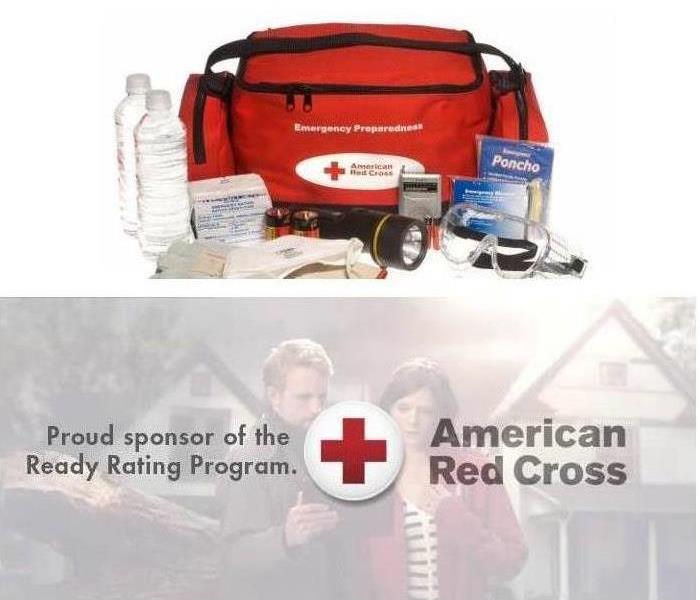 SERVPRO is proud to be a partner of the American Red Cross both corporately and locally since 2013.
SERVPRO is proud to be a partner of the American Red Cross both corporately and locally since 2013.
You may not be at home when a storm starts, so it is important to have basic supplies of food and water as well as a way to stay warm without power in several locations such as your workplace, vehicle, and/or school. You can build your supplies over time by adding a few items each week or month. For a complete list of emergency supplies, visit www.ready.gov/kit. Check these supplies off of your Winter Storm Preparedness Checklist once you add them to your emergency kit.
Emergency Communication
Make sure you have everything you will need to get in touch with your family either through cellular phones or email.
Medical Needs
Be equipped to tend to any current or unexpected medical conditions your family members may have. Ask your doctor about storing prescription meds such as at least a three days’ supply of heart and blood pressure medication, insulin for diabetics, and other prescription drugs such as inhalers for those with asthma. Include battery backup power for power-dependent mobility devices, oxygen, and other assistive technology needs.
Critical Documents
Place any important documents in a sealed, waterproof container to keep them dry and easily accessible.
Tools and Safety Items
Small items like matches, flashlights, a multi-tool, pocket knife, and a whistle (to signal for help) can make a huge difference for your family while weathering a storm.
Food/Supplies
Have at least a three-days’ supply of non-perishable food and water for your family. Remember to store anything specific to your family’s needs.
Warm Clothing and Blankets
Warm clothes and blankets can help prevent hypothermia. Do not forget warm, waterproof, and protective footwear as well as gloves.
In the event that your home or business is damaged by severe weather, please don’t hesitate to call SERVPRO of Gurnee for assistance. Our team is available 24/7/365 for your water damage emergencies as well as a variety of other property repairs.
When Floods or Storms hit, SERVPRO is Ready!
6/14/2019 (Permalink)
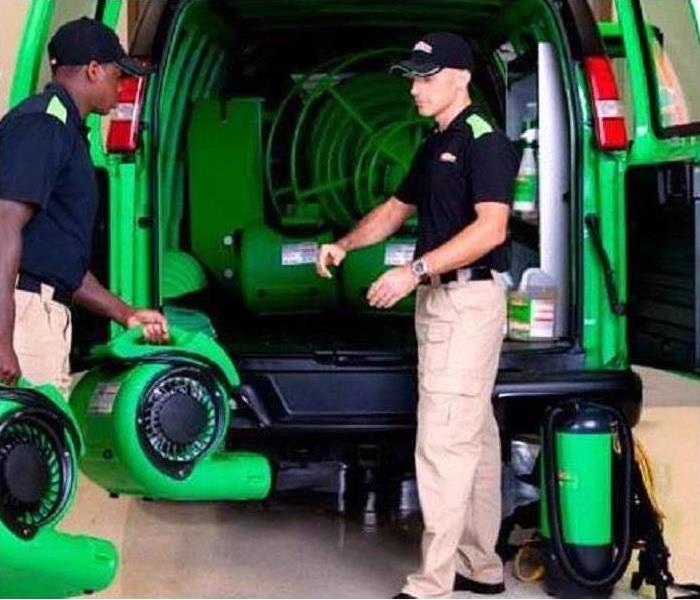 Our highly trained crews are "ready for whatever happens."
Our highly trained crews are "ready for whatever happens."
SERVPRO of Gurnee specializes in storm and flood damage restoration. Our crews are highly trained and we use specialized equipment to restore your property to its pre-storm condition.
Faster Response
Since we are locally owned and operated, we are able to respond quicker with the right resources, which is extremely important. A fast response lessens the damage, limits further damage, and reduces the restoration cost.
Resources to Handle Floods and Storms
When storms hit Lake County, we can scale our resources to handle a large storm or flooding disaster. We can access equipment and personnel from a network of 1,650 Franchises across the country and elite Disaster Recovery Teams that are strategically located throughout the United States.
Have Storm or Flood Damage? Call Us Today 847-557-1080
How to prepare for a Hail storm
6/12/2019 (Permalink)
Reduce Hail Damage
If you haven’t taken a look at your roof in a while, now’s the time. Spring often means storms and occasional severe weather that can include high winds and hail. Roof repairs today can help you avoid extensive, time-consuming cleanup later.
- Repair or replace worn, curled or missing shingles.
- If your roof is aging, consider replacing it before hail season begins.
During a Hailstorm
Protect Yourself and Your Car
In severe storms, a hail stone can be as big as a softball and fall at 50 to 100 miles per hour.
- Stay indoors.
- Stay away from skylights and glass doors to avoid broken glass.
- If it is safe, close drapes, blinds or shades to prevent debris from blowing inside.
- If you can, park your car in the garage or other covered area.
After a Hailstorm
If you have experienced damage from a hailstorm, report it as soon as possible. We’re "Here to Help" 24 hours a day, seven days a week. SERVPRO of Gurnee can work with your insurance to get your home back to new. Tarping your roof, and removing the water damage that can occur from holes made by hail in your roof.
Have Storm or Flood Damage?
Call Us Today 847-557-1080
Ways to Get Weather Warnings
3/5/2019 (Permalink)
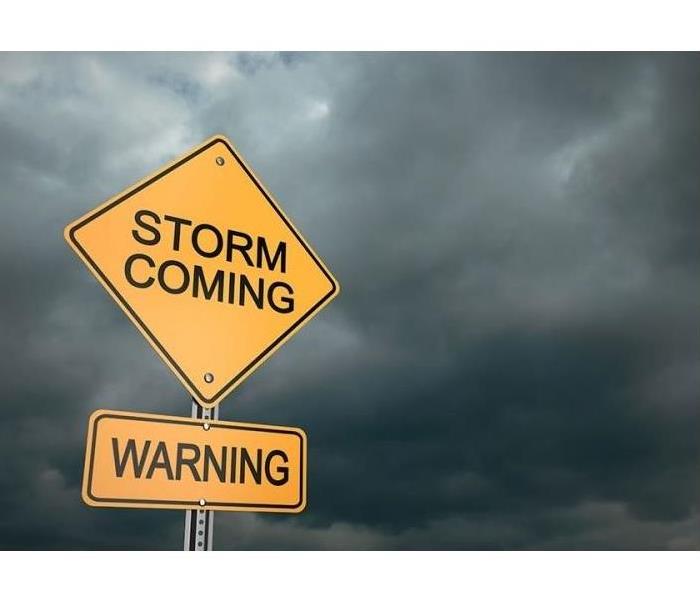 Stay informed on weather in your area
Stay informed on weather in your area
Storm season is upon us. Do you know all the ways you can stay informed about inclement weather in your area? Here are some Ways to get Warnings and stay in the know.
Wireless Emergency Alerts
Emergency messages sent by the National Weather Service (NWS) and other agencies via your mobile carrier.
Your phone will receive the alters moments after being issued. Phones that are using cell towers in the alert zone will receive the WEA.
NOAA Weather Radio
A nationwide network of radio stations broadcasting continuous weather info from your local NWS office.
These battery-powered radios are a great source of weather warnings when the power is out and at night when you may be sleeping.
The Internet
Check weather.gov on a desktop or mobile.weather.gov on your mobile device.
Other ways to find warnings online include social media, other weather apps and local news sites.
Local TV and Radio
Local stations broadcast official warnings, plus forecasts and storm tracks from on-air meteorologists.
TV in particular is a great source of emergency info, since radar displays, maps, and other graphics can be shown.
Outdoor Sirens
Only designed to alert people who are outdoors.
Sirens are not intended to alert people who are in cars, homes, or other buildings.
Storm damage can happen, no matter how prepared you are. Call SERVPRO of Gurnee. We have the training, tools and team to help you. 847-557-1080
Types of Storm Damage
3/1/2019 (Permalink)
Wind Damage Restoration
Hurricane damage sometimes includes severe wind damage. Roof damage in this situation may range from a missing roof, to harsh winds and rains shearing away asphalt tiles. Roof repair of obvious defects usually ensues in the wake of hurricane damage and storm remediation. Correcting roof damage may challenge homeowners after a disaster, since a roof leak may not appear obvious.
How can a roof leak and roof damage escape easy detection in this situation? Wind damage may loosen flashing, eventually causing another roof leak weeks after the storm. Even a subtle roof leak of this nature can produce damp, moldy conditions inside the home. Obtaining fast roof repair may prevent long term interior damage. A wind damage home restoration expert may assist clients in receiving comprehensive roof assessments and roof repair services when hurricane damage afflicts an area. Their expertise helps property owners address storm damage and roof damage more effectively.
Flooding and Recovery
Flood water frequently poses a risk in coastal areas. Yet heavy rains may cause river flooding miles inland also. If the surrounding terrain cannot absorb ground water, runoff contributes to flood water. Even residents of mountainous areas sometimes sustain varying degrees of flood damage if frozen pipes rupture. Flood pump failures contribute to basement flooding and contaminated ground water in some locations, too.
Flooding may disrupt municipal water systems. Experts need to assess ground water and evaluate the condition of pipes following flood damage. Hiring a storm restoration firm may allow you to begin your cleanup process even before water restoration occurs. (Cleaning before water restoration often proves essential yet challenging.) By relying upon a trained specialist, you'll usually obtain faster storm remediation. These experts may suggest ways to help mitigate flood water damage in the future, for instance, by requesting backup flood pump installation.
Visit us at SERVPRO of Gurnee for more information on Storm damage.
Using a Portable Generator Safely
2/26/2019 (Permalink)
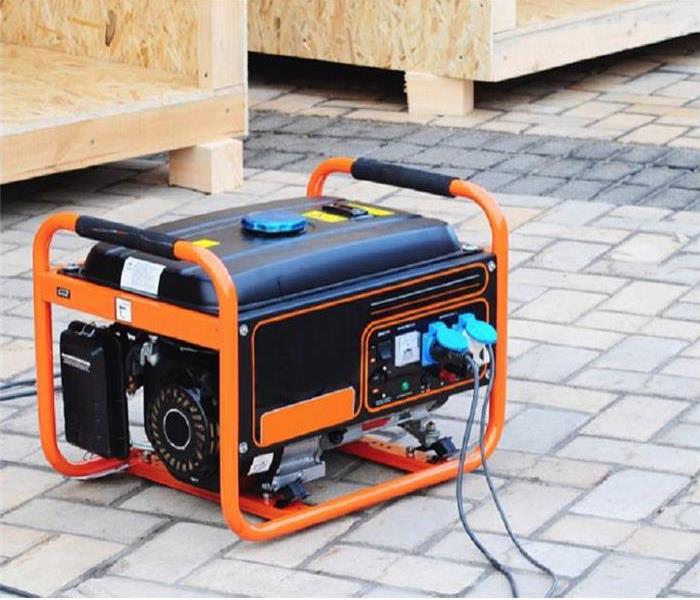 Don't let your generator caused more damage
Don't let your generator caused more damage
We all have been there when the power in your home or business decides to shut off caused by bad weather or a community outage. The wind and ice as of late have caused power outages for more than a few local communities. The last thing anyone wants to worry about during cold weather is keeping your heat on. Portable heaters can help, but how will you run them with no power? Many businesses and residential properties have the convenience of a backup generator located nearby. With operation of a generator do you know the first things to keep in mind to staying safe while using one?
If you have a generator on hand for power outages during severe weather, follow the safety tips below from the American Red Cross:
- Never use a generator, grill, camp stove, or other gasoline, propane, natural gas, or charcoal-burning devices inside a home, garage, basement, crawl space, or any partially enclosed area.
- To avoid electrocution, keep the generator dry and do not use in rain or wet conditions. Do not touch the generator with wet hands.
- Opening doors and windows or using fans will not prevent carbon monoxide (CO) buildup in the home. Although CO can’t be seen or smelled, it can rapidly lead to full incapacitation and death. Even if you cannot smell exhaust fumes, you may still be exposed to CO. If you start to feel sick, dizzy, or weak while using a generator, get to fresh air immediately.
- Install CO alarms in central locations on every level of your home or property and outside sleeping areas to provide early warning of accumulating carbon monoxide.
Even in bad weather, the best place for your generator is outside. If you must keep it protected to keep it running and be safe then a garage is a good place, but pay attention to CO levels if your garage is attached to your house. Only use your generator if you absolutely have to and call for help if you need it.
Do you have an Emergency Plan?
2/26/2019 (Permalink)
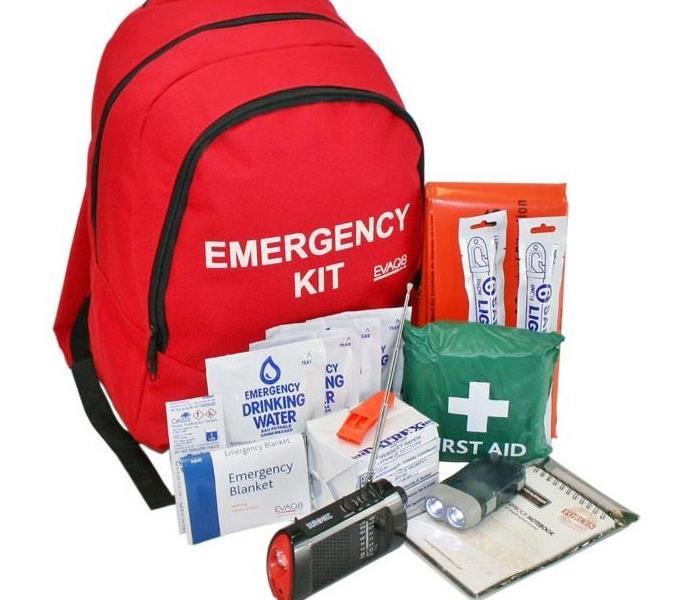 Making a plan is easier than you think
Making a plan is easier than you think
Your family may not be together if a disaster strikes, so it is important to know which types of disasters could affect your area. Know how you’ll contact one another and reconnect if separated. Establish a family meeting place that’s familiar and easy to find.
Having a plan is key to surviving. With these few simple steps, it can help you evacuate your home safely before help arrives.
Step 1: Discuss these 4 questions with your family, friends, or household to start your emergency plan.
- How will I receive emergency alerts and warnings?
- What is my shelter plan?
- What is my evacuation route?
- What is my family/household communication plan?
Step 2: Consider specific needs in your household.
As you prepare your plan tailor everything to your specific daily living needs and responsibilities. Discuss supplies and responsibilities and how people in the network can assist each other with communication, care of children, business, pets, or specific needs like the operation of durable medical equipment. Create your own personal network for specific areas where you need assistance. Keep in mind some these factors when developing your plan:
- Different ages of members within your household
- Responsibilities for assisting others
- Locations frequented
- Dietary needs
- Medical needs including prescriptions and equipment
- Disabilities or access and functional needs including devices and equipment
- Languages spoken
- Cultural and religious considerations
- Pets or service animals
- Households with school-aged children
Step 3: Fill out a Family Emergency Plan
Create and fill out important information needed for the whole family to understand. Make sure to communicate key steps and meeting spots in case of an emergency. Using pictures or graphics can make it easier for the children in the home to understand main places to evacuate.
Step 4: Practice your plan with your family/household
SERVPRO of Gurnee specializes in storm and flood damage restoration. Our crews are highly trained and we use specialized equipment to restore your property to its pre-storm condition. When storms hit, we can scale our resources to handle a large storm or flooding disaster. We can access equipment and personnel from a network of 1,650 Franchises across the country and elite Disaster Recovery Teams that are strategically located throughout the United States. Call SERVPRO of Gurnee 847-557-1080
Lightning Facts and Tips
9/21/2017 (Permalink)
SERVPRO of Gurnee and SERVPRO of Libertyville/ N. Chicago City/ Lake Bluff will board up your home or business, clean contents, clean structure, and rebuild if your building is struck by lightning and incurs fire damage. The odds of being struck by lightning is 1 in 500,000 and is the leading cause of weather-related fatalities. Here are some tips and facts about lightning from the CDC:
- Check the forecast before planning outdoor activities. If the weather is calling for outdoor thunderstorms, postpone your trip or activity, or make sure there is adequate shelter available.
- “When thunder roars, go indoors.” Go indoors or find a safe enclosed shelter when you hear thunder. Some ideas of safe shelters are offices, homes, shopping centers, or hard-top vehicles (with the windows rolled up).
- Avoid windows, doors, porches, and concrete. Do not lie on concrete floors and avoid leaning against concrete walls. Lightning can travel through any metal wires or bars in concrete walls or flooring.
- Avoid water during a thunderstorm by not bathing, showering, washing dishes, or any other contact with water because lightning can travel through a building’s plumbing.
- Avoid electronic equipment that is connected to an electrical outlet. Lightning can travel through any metal wires or bars in concrete walls.
- Make sure to equip homes and businesses with surge protectors to protect appliances and other electronic devices.
- If you are outdoors and there is not shelter, do not lie down. Instead, crouch close to the ground touching the ground as little as possible. If you are in a group, make sure to separate.
Need Emergency Service? Call Us 24/7 –847-557-1080
Emergency Supply Checklist from FEMA
9/21/2017 (Permalink)
- Water, one gallon of water per person per day for at least three days, for drinking and sanitation
- Food, at least a three-day supply of non-perishable food
- Battery-powered or hand crank radio and a NOAA Weather Radio with tone alert and extra batteries for both
- Flashlight and extra batteries
- First aid kit
- Whistle to signal for help
- Dust mask, to help filter contaminated air
- Wrench or pliers to turn off utilities
- Can opener for food (if kit contains canned food)
- Local maps
- Prescription medications and glasses
- Infant formula and diapers
- Pet food and extra water for your pet
- Important family documents such as copies of insurance policies, identification and bank account records in a waterproof, portable container
- Cash or traveler’s checks and change
- Emergency reference material such as a first aid book or information from ready.gov
- Sleeping bag or warm blanket for each person. Consider additional bedding if you live in a cold-weather climate.
- Complete change of clothing including a long-sleeved shirt, long pants and sturdy shoes. Consider additional clothing if you live in a cold-weather climate.
- Household chlorine bleach and medicine dropper – When diluted nine parts water to one part bleach, bleach can be used as a disinfectant. Or in an emergency, you can use it to treat water by using 16 drops of regular household liquid bleach per gallon of water. Do not use scented, color safe or bleaches with added cleaners.
- Fire Extinguisher
- Matches in a waterproof container
- Feminine supplies and personal hygiene items
- Mess kits, paper cups, plates and plastic utensils, paper towels
- Paper and pencil
- Books, games, puzzles or other activities for children
Catastrophic Storm Cleaning in Lake County, IL
9/21/2017 (Permalink)
Hurricane Sandy, Hurricane Matthew, Hurricane Harvey, and Hurricane Irma are catastrophic storm events where SERVPRO of Gurnee and SERVPRO of Libertyville/N. Chicago City/ Lake Bluff have sent crews, vehicles, and equipment to help homeowners and business owners get back in their homes and businesses. SERVPRO has over 1700 franchises all over the United States, and many of these franchises have teams that are ready to respond to catastrophic storm events helping businesses and homeowners after a severe storm.
This summer we requested SERVPRO catastrophic storm teams to help with our recent storms and flooding on July 12th, 2017 due to the high volume of calls. We received crews from California, Rhode Island, Oklahoma, Tennessee, Michigan, among other states. When you call SERVPRO during a catastrophic storm event, you are able to receive a team of technicians that are background checked, completed SERVPRO’s several Employee Certification Training Programs, follows and adheres to the ANSI/IICRC S500 Water Restoration Reference Guide, works directly with your insurance, takes photos before, throughout, and after job completion, and are professionally certified with the Institute of Inspection Cleaning and Restoration Certification.
Flooding in Gurnee Tips
3/28/2017 (Permalink)
With the spring rains approaching there will be watchful eyes on the water levels of our local rivers and ponds. Recently the Village of Gurnee posted an article in their community newsletter with tips for protecting your Gurnee home from Spring Flooding. (You can read the article here.)
SERVPRO of Gurnee and SERVPRO of Libertyville/N. Chicago City/ Lake Bluff is open and ready to help 24/7 365 days per year. We are on site fast to help mitigate and protect your home when water has intruded whether it is from heavy rains to sump pump failure. Did you know that here at SERVPRO of Gurnee and SERVPRO of Libertyville/ N. Chicago City/ Lake Bluff ALL of our staff are WRT certified? What that means is that our entire staff is trained as Water Damage Restoration Technicians through the IICRC (Institute of Inspection Cleaning and Restoration Certification). All our team members have gone through the course and passed an exam to be on your property to properly take care of the water damage has occurred in your home. There are more steps to just extracting the water from your home. We check to see the migration of where the water has traveled, and which walls have become saturated.
When Storms or Floods hit Antioch, SERVPRO is ready!
7/11/2016 (Permalink)
SERVPRO of Gurnee & SERVPRO of Libertyville/ N. Chicago City/ Lake Bluff specializes in storm and flood damage restoration. Our crews are highly trained and we use specialized equipment to restore your property to its pre-storm condition.
Faster Response
Since we are locally owned and operated, we are able to respond quicker with the right resources, which is extremely important. A fast response lessens the damage, limits further damage, and reduces the restoration cost.
Resources to Handle Floods and Storms
When storms hit Antioch, we can scale our resources to handle a large storm or flooding disaster. We can access equipment and personnel from a network of 1,650 Franchises across the country and elite Disaster Recovery Teams that are strategically located throughout the United States.
Have Storm or Flood Damage? Call Us Today 847-838-2954
 Winter storms can cause major damage to your home. Inspect the exterior and interior after a storm and call us if you need help!
Winter storms can cause major damage to your home. Inspect the exterior and interior after a storm and call us if you need help!


 24/7 Emergency Service
24/7 Emergency Service

























